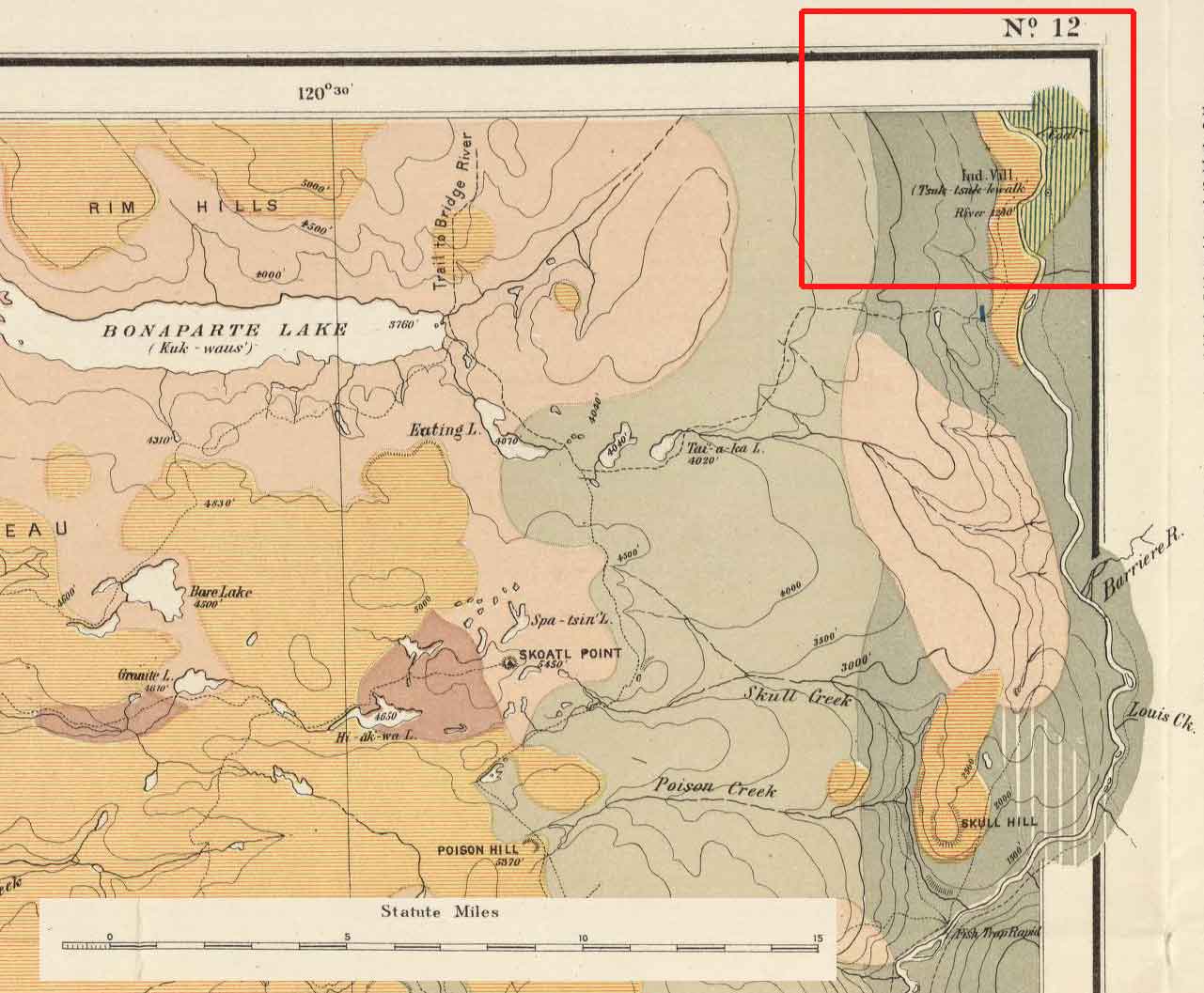Rylatt was born in Lincoln, Lincolnshire, around 1840, a son of a boatman and the oldest of 11 children. After enlisting in the Royal Engineers and serving in the Crimean War, he was transfered to the Columbia Detachment, responsible for the foundation of British Columbia as the Colony of British Columbia (1858–66). After five years in British Columbia he was discharged with an Exemplary Character with eleven years’ total service.
In 1871 Rylatt was recruited by fellow Royal Engineer veteran Walter Moberly [1832–1915], who was in charge of S party of the Canadian Pacific Railway Survey. Rylatt served as quartermaster for the party until 1873, when he got word that his wife had died. He wrote a memoir of the trip for his family, now published under the title Surveying the Canadian Pacific — Memoir of a Railroad Pioneer(1).
Upon starting, our party consisted of 4 officers (surveyors), 16 men, principally axeman about one half of them Canadian, 8 Mexican and Indian Packers, and one hunter for the party — a Bavarian. There were 45 animals in the Pack Train, each carrying about 300 pounds.
S Party spent winter 1871-72 on the Columbia River near the Blaeberry River at the west end of Howse Pass. Moberly, who had spent the winter in Ottawa, arrived at their camp on June 16th. The ‘S’ party spent the entire season moving their equipment, supplies and pack trains through the Athabasca Pass, and north, arriving in January at the east end of the Yellowhead Pass, which Rylatt consistently called the Leatherhead Pass. On May 13, 1873, Rylatt set off through the Yellowhead Pass with one companion and three horses, reaching Kamloops on June 14. Rylatt continued on by stage to his home at New Westminster.
And now, my reminiscence is done. I might go on to state I found an empty house, my goods intact but stored in a ware-house. My return to my empty home, and the replacing of everything therein as it used to be in the days that were gone. My sad thoughts as l lay stretched upon the bed my poor wife had breathed her last upon. My many visits to her grave, and my final sale of home and belongings, and my wandering away to seek another home, under another government. But to what end?
- — Surveying the Canadian Pacific: Memoir of a Railroad Pioneer. Salt Lake City: University of Utah Press, 1991
- 1. Rylatt, Robert M. [fl. mid-1800s]. Surveying the Canadian Pacific: Memoir of a Railroad Pioneer. Salt Lake City: University of Utah Press, 1991
![Buckskin Suit [1872]](/wp-content/uploads/2024/11/rylatt-buckskin-suit.jpg)
